

The Asia Pacific Offshore Decommissioning Services Market shows significant growth potential, driven by technological advancements, increased consumer demand, and evolving regulatory frameworks.
The APAC market is projected to reach US$3bn by 2030, growing at a CAGR of 9.5% from 2024 to 2030. As the market matures, innovation in product offerings and digital transformation is expected to shape its expansion. Rising interest in sustainable and eco-friendly solutions, especially in sectors like manufacturing and healthcare, is likely to drive demand. Additionally, France’s aging population and shrinking workforce may push for automation and AI-driven technologies across industries.
Sales ratios are projected to shift toward higher-value, premium products, fueled by increasing disposable incomes and consumer preferences for quality over quantity. Government initiatives promoting industry modernisation and international trade partnerships will further enhance growth opportunities. However, competitive pressures and stringent regulations may influence market dynamics.
The Offshore Decommissioning Services Market in North America showcases significant regional diversity, driven by varying consumer preferences, technological advancements, and regulatory landscapes across the US, Canada, and Mexico. The US remains the dominant player, offering a robust infrastructure and high demand across sectors such as healthcare, technology, and consumer goods. Canada complements with a focus on innovation and sustainability, while Mexico's manufacturing base plays a crucial role in cost-efficient production.
This market's economic significance lies in its contribution to GDP growth, job creation, and international trade, making it a key driver in both domestic and global economies. Regional strengths combined with market size position North America as a critical hub for the expansion and investment opportunities in the Offshore Decommissioning Services industry.
The key factors driving the growth of the offshore decommissioning services market include an increasing number of aging offshore oil and gas platforms, stringent regulations regarding decommissioning activities, and advancements in decommissioning technologies. The key players in the offshore decommissioning services market include Schlumberger, Baker Hughes, Halliburton, Weatherford International, and Tetra Technologies.
Technological advancements such as robotics, drones, and advanced sensing technologies are enabling more efficient and cost-effective decommissioning activities in the offshore sector. Market trends in the offshore decommissioning services industry, such as regulatory changes, technological advancements, and industry consolidation, can impact business investment decisions by influencing the demand for decommissioning services, the competitive landscape, and the potential for growth and profitability.
The offshore decommissioning services market aligns with environmental and sustainability goals by addressing the safe and efficient retirement of offshore infrastructure, minimising environmental impacts, and promoting the responsible management of decommissioning waste and materials.
Moreover, stakeholders' engagement plays a major role in the offshore decommissioning services market. Stakeholder engagement is essential in the offshore decommissioning services market to address the concerns and interests of various stakeholders, including regulatory bodies, industry players, environmental groups, local communities, and investors, throughout the decommissioning process.
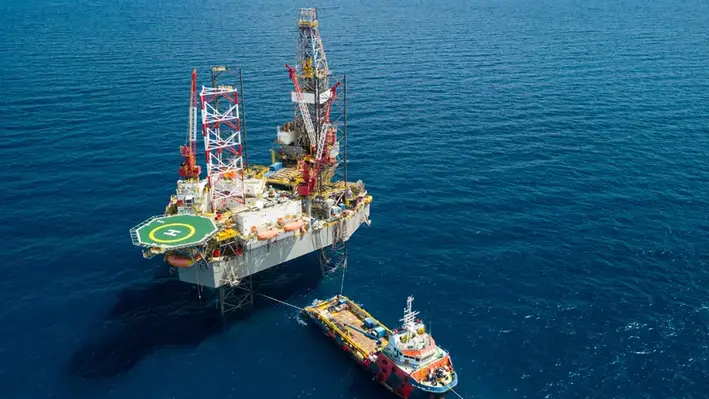
 The Woodside-operated Shenzi field has undergone planned shutdown to approach integrity and reliability scopes
The Woodside-operated Shenzi field has undergone planned shutdown to approach integrity and reliability scopes
An unplanned outage also had to be addressed, after which a key well was brought to production in November 2024.
The Shenzi North project has been in production in the US Gulf of Mexico since September 2023. For optimised production, this two-well subsea tieback operates as an extension of the existing Shenzi infrastructure.
Situated approximately 195 km off the coast of Louisiana in the Green Canyon protraction area, the Shenzi assets comprise of the Caesar oil pipeline and the Cleopatra natural gas pipeline that form the main source of the several connecting pipelines that help the product reach onshore from the Green Canyon region. While the crude oil produced is consumed in Gulf Coast, the natural gas generated from the field is directed to the Cleopatra via a lateral pipeline that connects onshore to the Neptune processing plant in St Mary’s Parish, Louisiana.
Commenting on the project's notably short turnaround, Woodside CEO Meg O’Neill had said, "First production from Shenzi North shows how we are leveraging existing infrastructure to increase production and provide attractive returns from our Gulf of Mexico business.
"Taking the project from FID to first oil in 26 months is a great achievement. I commend the project team on safely bringing this resource into production well ahead of schedule.”
Enjoying a 72% interest, Woodside had discovered the Shenzi field in 2002, with first hydrocarbons production following in 2009. Besides Woodside, Repsol is a partner in the field with a 28% interest.
Gulf Coast customers benefit from more than 100,000 barrels of oil per day and 50 million standard cubic feet of gas per day that comes from the Shenzi field.
A well from the Mad Dog Argos that is part of the Mad Dog conventional oil and gas field situated 200km off the coast of Louisiana in the south-eastern Green Canyon protraction area, US Gulf of Mexico, has maintained production at the peak rate of ~130 kbbl/d, and is undergoing an infill injector well.
Argos is considered the driving force of the second phase of the Mad Dog project as it helped the brownfield site to reach a gross production capacity of up to 140,000 boepd. This semi-submersible platform has helped bp to boost production by atleast 20%. "Argos is key to our strategy of increasing our Gulf of Mexico production to around 400,000 barrels of oil equivalent per day by the middle of this decade,” said Ewan Drummond, Senior Vice President, Projects, Production and Operations.
An infill development well work has also began at Mad Dog A-Spar, besides a planned offshore facility shutdown.
A Spar is a subsea truss spar which processed Phase 1 of the Mad Dog project, with over 100,000 boepd transported to Ship Shoal 332B through the Caesar pipeline, followed by the Cameron Highway Oil Pipeline System, which further provides gateway to the US interior. More than 60 mn st cu/ft of gas, on the other hand, goes through the Cleopatra pipeline to finally reach the Nautilus Gas Transportation System into Louisiana.
While bp operates the Mad Dog field, Woodside holds a 23.9% interest in the project.
To know more about the global well intervention scene, click here.
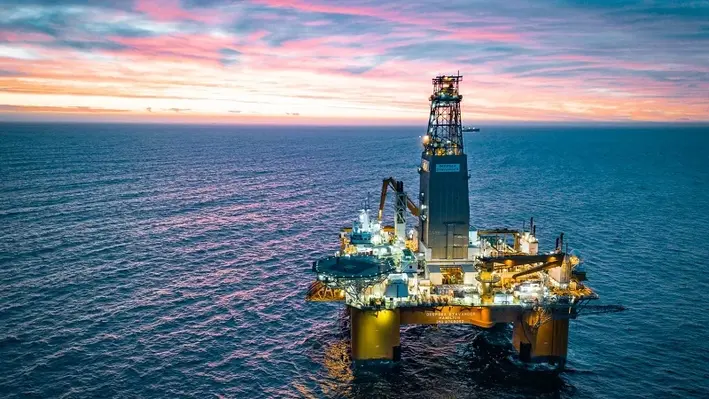
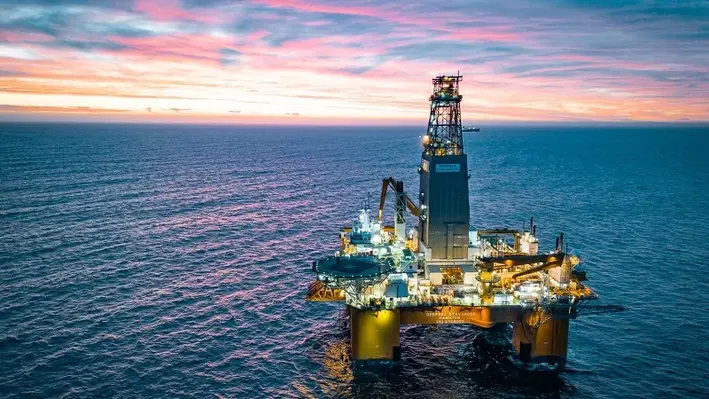 Well services and engineering solutions provider Odfjell Technology has entered into a cooperation agreement with Australian-based R&D Solutions to expand its presence in the Asia Pacific region.
Well services and engineering solutions provider Odfjell Technology has entered into a cooperation agreement with Australian-based R&D Solutions to expand its presence in the Asia Pacific region.
The agreement allows Odfjell Technology to utilise its well intervention services, wellbore clean up and whipstock tools to service the Australian well services and deepwater markets. The company also has future plans for growth in the regional plug and abandonment (P&A) sector.
Paul Toner, Vice President – Middle East & Asia Pacific at Odfjell Technology, said, “Expanding our reputation and relationships into Australia is a critical part of our global growth strategy. With strong localised operations already in place across Southeast Asia, we are confident our new cooperation agreement with R&D Solutions will enable the same excellent level of customer service and delivery for the Australian energy market.”
Doug Gillespie, Director and Managing Partner at R&D Solutions, commented, “R&D Solutions prides itself on the technology and service capabilities it has delivered to market over the years […] we feel Odfjell Technology compliments the spirit of our motto ‘Tomorrow’s Technology Today’, bringing the next level of excellence in quality service and technology to Australia.”
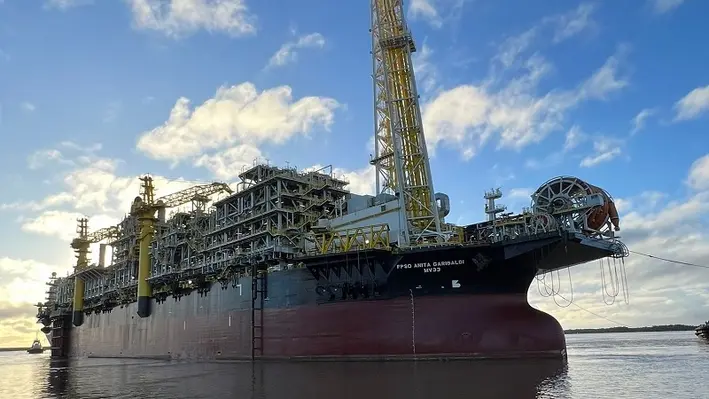
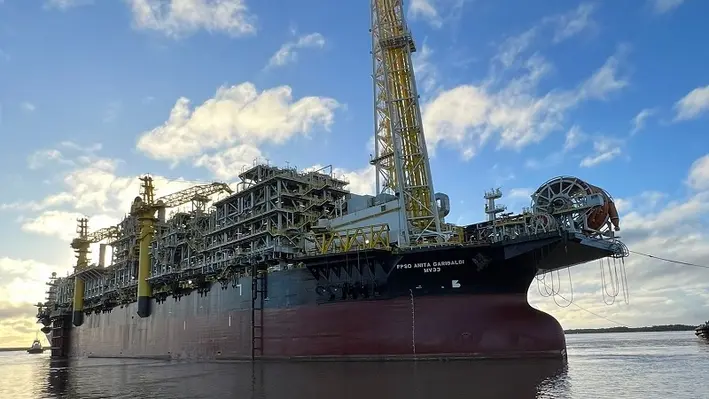 It was a widely successful 2024 for Petrobras as the Brazilian operator has reported it has achieved all of its production targets that were established in the 2024-2028+ Strategic Plan.
It was a widely successful 2024 for Petrobras as the Brazilian operator has reported it has achieved all of its production targets that were established in the 2024-2028+ Strategic Plan.
In total, oil and natural gas production reached 2.7 million barrels of oil equivalent (boed). Commercial oil and natural gas production reached 2.4 million boed and oil production was reported at 2.2 million barrels per day.
The operator set a new annual record for total own and operated production in the pre-salt, with 2.2 million boed and 3.2 million boed respectively, equating to 81% of the company’s total production.
Petrobras made significant headway in 2024, with one note-worthy project including the start-up of two new platforms: the FPSO Maria Quitéria, located in the Jubarte field in the Campos Basin; and the FPSO Marechal Duque de Caxias in the Mero field located in the Santos Basin pre-salt layer.
During the year, the FPSO Sepetiba platform, in the Mero field, reached its maximum oil production capacity after eight months of operation. The ramp-up of FPSO platforms partially offset the losses resulting from maintenance shutdowns and the decline in mature fields in addition to the impact on production due to unscheduled shutdowns determined by the ANP and the effects of the Ibama strike.
Another significant milestone of the year was the start of commercial operations of the Natural Gas Processing Unit (UPGN), located in the Boaventura Energy Complex, in November which has the capacity to process 10.5 million m3/day of gas through its first module.
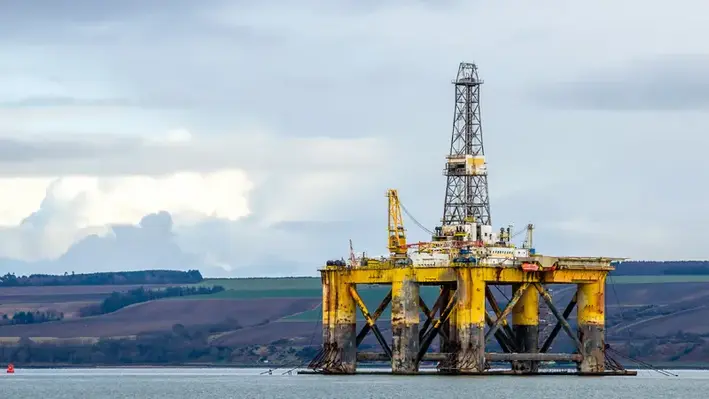
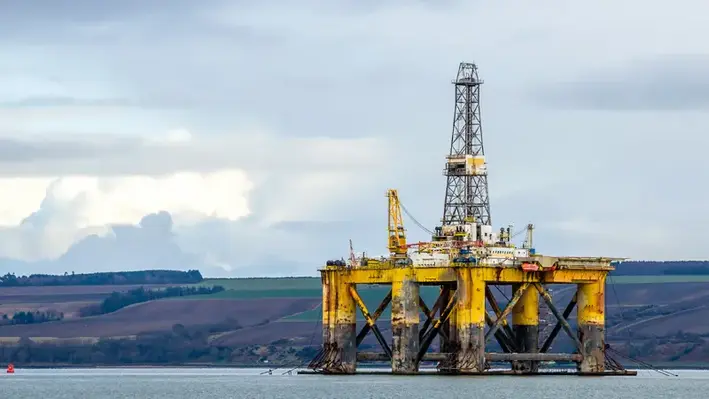 The Australian government is seeking expert guidance to dismantle over 200 aging oil and gas structures set for decommissioning this year. The Department of Industry, Science, and Resources (DISR) has issued a call for technical specialists to oversee the process, ensuring compliance with environmental and regulatory standards.
The Australian government is seeking expert guidance to dismantle over 200 aging oil and gas structures set for decommissioning this year. The Department of Industry, Science, and Resources (DISR) has issued a call for technical specialists to oversee the process, ensuring compliance with environmental and regulatory standards.
With a wave of decommissioning ahead, Australia is preparing for large-scale offshore infrastructure removal. The Centre of Decommissioning Australia (CODA) projects significant activity between February and July 2025. The scope includes 41 platform wells, 34 subsea wells, 15 exploration wells, multiple production units, pipelines, and various subsea structures.
Strengthening regulations and industry oversight
The growing number of obsolete offshore installations has prompted a tightening of Australia’s regulatory framework. Amendments to the Offshore Petroleum and Greenhouse Gas Storage Act 2006 (OPGGS Act) have introduced stricter financial requirements, increased oversight on asset transfers, and implemented trailing liability measures—holding companies accountable long after operations cease.
CODA estimates decommissioning liabilities at approximately USD $40.5 billion, with well plug and abandonment (P&A) and pipeline removals making up the bulk of costs. In response, DISR has created a dedicated Decommissioning Branch, recruiting specialists to refine policies, assess risks, and align strategies with international best practices.
Positioning Australia as a decommissioning leader
Beyond environmental and financial safeguards, Australia sees an opportunity to build a competitive decommissioning industry. With an estimated $60 billion in offshore retirement costs over the next 30–50 years, the government is laying the groundwork for a domestic sector that could drive job creation, innovation, and expertise.
The National Offshore Petroleum Safety and Environmental Management Authority (NOPSEMA) is leading efforts to uphold safety and environmental protocols throughout the process. By establishing best-in-class decommissioning capabilities, Australia aims to not only manage its offshore legacy but also export its expertise to global markets, transforming a costly challenge into an economic opportunity.

 A recent report on Offshore Oil and Gas Decommissioning by the Australian Academy of Technology Sciences and Engineering highlights the surge in the development and deployment of advanced technologies tailored to the decommissioning process.
A recent report on Offshore Oil and Gas Decommissioning by the Australian Academy of Technology Sciences and Engineering highlights the surge in the development and deployment of advanced technologies tailored to the decommissioning process.
The oil and gas industry has embraced a sector-wide digital transformation, with the benefits of enhancing worker safety, reducing environmental impacts, driving efficiencies and cutting costs. This transformation has enabled a reduction in the number of workers on offshore facilities, for example, thanks to increasing remote operations and increased automation. There is likewise scope for the decommissioning sector to undergo a similar transformation.
However the report notes that, while digital technologies are a key enabler for more efficient decommissioning practices, they need to be accompanied by the further development of physical technologies to advance decommissioning processes.
One key area of technological advancement highlighted is the use of robotics and autonomous systems for subsea infrastructure removal and dismantling. These technologies enable precise and controlled operations in challenging offshore environments, such as the Gulf of Mexico, reducing the need for human intervention and minimising safety risks. Automated cutting systems use robotics and advanced machinery to perform precise cutting tasks during the removal phase of decommissioning, for example ROVs equipped with cutting devices can be used to cut pipes into sections, facilitating pipeline removal, and swarm robotics for collaborative subsea monitoring, involving the use of multiple small, autonomous robots for collaborative monitoring tasks, can enhance efficiency and coverage in subsea environments. The integration of AI and ML algorithms is enhancing the predictive maintenance of decommissioning equipment, facilitating process optimisation, and improving cost-effectiveness.
Rigless P&A processes are being explored globally due to potential cost efficiency gains, improved environmental compliance and enhanced safety outcomes, the report notes. This approach enables safe pressure testing, providing a comprehensive understanding of individual well conditions, leading to safer and more cost-effective P&A interventions. In addition, alternative barrier technologies such as thermite plug technology, resin plugs and bismuth alloy play an important role in ensuring the integrity of decommissioned wells as attentions shifts towards more cost-effective, efficient and environmentally compliant decommissioning solutions.
Another technological development highlighted is the application of advanced sensing and monitoring systems, which can assess environmental impacts and support risk assessment during decommissioning activities. This includes autonomous and remote systems equipped with state-of-the-art sensors, as well as satellite imagery. These technologies are also being used to provide real-time data on areas such as water quality, marine life and ecosystem health, helping operators to make informed decisions about decommissioning strategies and mitigating potential environmental risks.
Circular economy principles are increasingly driving innovation, the report notes, particularly in recycling and reusing decommissioned materials. Advanced material separation technologies and processing methods can be used to recover valuable resources from decommissioned equipment and structures, contributing to resource conservation, and reducing waste.
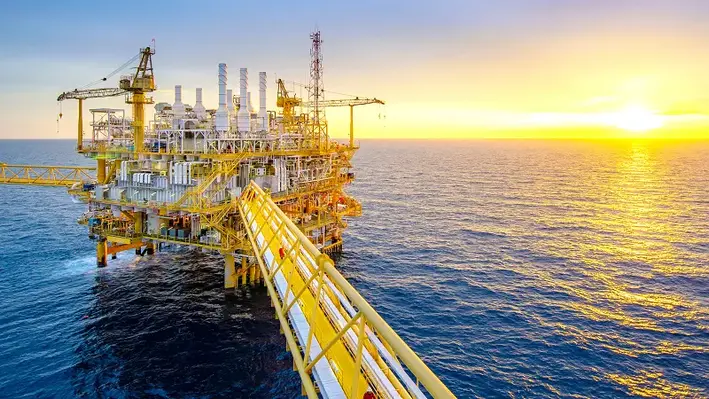
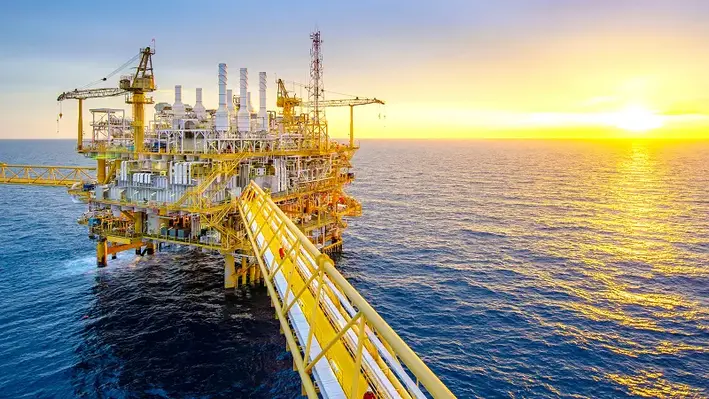 As part of its promise to boost the competitiveness of its upstream sector while pursuing a sustainable future, PETRONAS will continue to prioritise its decommissioning responsibilities, directing its focus to accessing unused assets for potential repurposing.
As part of its promise to boost the competitiveness of its upstream sector while pursuing a sustainable future, PETRONAS will continue to prioritise its decommissioning responsibilities, directing its focus to accessing unused assets for potential repurposing.
The Malaysia-based operator has released its 2025-2027 Activity Outlook report, where it highlights the call to decommission the Sabah-Sarawak Gas Pipeline alongside 37 offshore facilities. PETRONAS’ three-year plan also includes the plugging and abandonment of 153 wells within the region.
The report states, “PETRONAS continues to explore innovative decommissioning solutions focusing on technologies, reuse/repurpose options, integrated multi-year execution approach for economies of scale, as well as identifying potential alternatives that can introduce cost compression. Thus, participation and collaboration are encouraging from all parties.”
PETRONAS’ report noted the importance of decommissioning matured assets in Malaysia’s upstream oil and gas industry as it is “essential to restore the area to a safe and environmentally stable condition.”
With that initiative at the forefront, in December 2024 the operator collaborated with the Department of Fisheries to launch the 10-year Malaysia Master Reefing Plan which outlines the potential for reefing in the region by spotlighting suitable candidates and locations to undergo the ‘rigs-to-reef’ operation: an initiative which stands as a popular decommissioning alternative in the Gulf of Mexico.
Alongside decommissioning, PETRONAS shares its outlook regarding upstream operations. In the short-term, the operator will focus on intensifying exploration activities and expediting appraisal programmes to sustain production and contribute towards Malaysia’s energy security. In the medium- to long-term, PETRONAS will continue to meet production targets and maximise shareholder value while decarbonising the value chain through innovation, technical deployment, and close collaboration with industry partners.
To read the full 2025-2027 Activity Outlook, click here.

 Woodside Energy has released an update of the company's decommissioning activities for the fourth quarter of 2024.
Woodside Energy has released an update of the company's decommissioning activities for the fourth quarter of 2024.
The removal of the Griffin Riser Turret Mooring (RTM) has been a highlight for the company as it marked the removal of nearly 25000 tonnes of infrastructure that included over 200 kms of pipe and 100 subsea structures that covered the Enfield, Echo Yodel, Stybarrow and Griffin fields. RTM removal besides, 20 wells have also been permanently plugged.
The RTM was recovered without significant obstacles to be transported to the Australian Marine Complex at Henderson, Western Australia, where its components will be cleaned and disassembled for recycling or reuse.
The Griffin field that is situated off 65 km north west of Onslow and 94 km north east of Exmouth had served in its lifetime Western Australia’s power needs with not only 62 billion cubic feet of gas, but also 167 million barrels of oil.
Above: Australia is preparing for a wave of decommissioning activity this year. (Image source: Adobe Stock)
Woodside's decommissioning campaigns at Stybarrow included the plugging and abandoning of three wells, removal of several moorings, structures, and wellheads that covered multiple fields offshore Western Australia. Last year, the company plugged and abandoned seven of 10 Stybarrow wells, recovered more than 90 subsea structures including wellheads, Xmas trees
and manifolds, and recovered 149 km of pipe.
Woodside's decommissioning work in Stybarrow was supported by McDermott under an engineering, procurement and removal contract.
“This award not only demonstrates McDermott’s proven track record in undertaking deepwater projects of diverse scopes, but it also highlights the critical importance of decommissioning in the offshore industry.
“With our seamless integration of engineering, fabrication, and offshore mobilisation expertise, we believe we are well-equipped to execute this project efficiently and responsibly, ensuring the safe recovery and removal of the Stybarrow DTM buoy,” said Mahesh Swaminathan, Senior Vice President, Subsea and Floating Facilities, McDermott.
The contract enables McDermott to fully remove the Stybarrow disconnectable turret mooring (DTM) buoy, and provide project management and engineering services for the recovery, transportation and offloading of the DTM buoy to an onshore yard for dismantling and disposal.
The Bass Strait decommissioning work continues as well, with plug and abandonment completed on the Perch and Dolphin facilities. Steel gravity based monotowers, the Perch and Dolphin facilities saw the deployment of DOF multi-purpose support vessel (MPSV) Skandi Darwin.
The MPSV's floating support asset can accomodate the whole workforce, eliminating crew transportaion costs. It also allows to complete abandonment operations on non-producing facilities which do not have accommodation based on them.
Speaking of the MSVP, Marine Field Superintendent, Matt Barney said, “We’re excited to start utilising the MPSV to expand our capabilities and adopt new technology to identify efficiencies, while ensuring the work can be completed safely.”
Allseas is also part of the Bass Strait decommissioning campaign, whereby the company will be dismantling up to 12 retired platforms from the region. “This landmark decommissioning project represents a significant milestone for Allseas in Australia,” said Evert van Herel, General Manager of Allseas Australia.
To know more about Australia's decommissioning scene, click here.
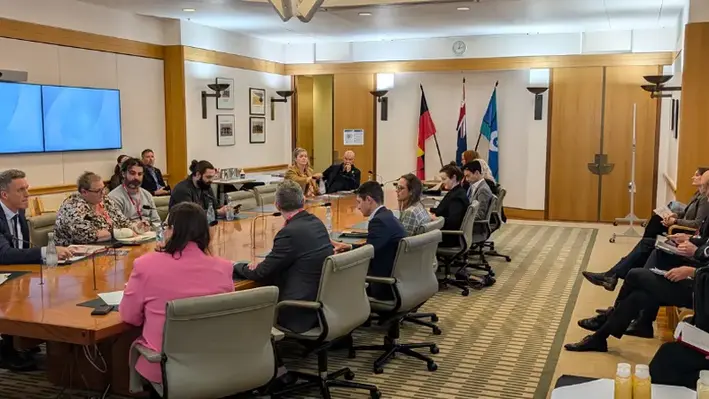
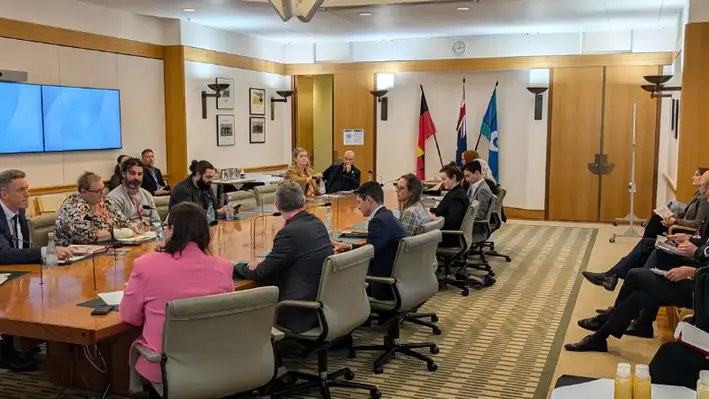
The Maritime Union of Australia (MUA) is looking forward to working with the new Offshore Decommissioning Directorate that has been established by the Australian Federal Government
This is a welcome development that signals to all stakeholders that offshore oil and gas decommissioning opportunities will be in the forefront of government thinking over the coming years and decades. The Union will continue to raise concerns and fight for a roadmap that delivers everything we should expect: full decommissioning, done properly, and all the high quality, safe and skilled Australian jobs and environmental care that is an essential component of the just transition from hydrocarbon industries to renewable energy projects offshore.
The Union is actively engaged with the Decommissioning Directorate to shape its implementation strategy and ensure it prioritises outcomes that reflect the interests of its members. The MUA reiterates the need for:
“Decommissioning is well underway, yet offshore workers continue to face unacceptable hazards, including poorly maintained rigs, fatigue, and hydrocarbon spills. The MUA is steadfast in our commitment to holding government and industry accountable for improving safety, environmental protections, and conditions on the job,” said Thomas Mayo, the Assistant National Secretary of the MUA.
“The release of the Roadmap underscores the critical role the MUA has played in shaping this initiative, and now is a critical time to address several significant shortcomings. While we welcome the establishment of a Decommissioning Directorate, the roadmap falls short of the robust framework our members deserve. The lack of concrete commitments, such as industry-funded infrastructure, checks and balances such as independent verification of completed work, and strengthened worker safety protections, is concerning,” Mayo explained.
“This moment cannot be overstated. Our public response is a clear signal to all stakeholders – government, industry, and our members – that the MUA is increasingly dedicating attention and resources commensurate with the significance of this opportunity. We call on the Federal Government to heed the expertise of the decommissioning workforce and adopt the Union’s upcoming further recommendations to the Directorate. Complacency is not an option,” Mayo added.
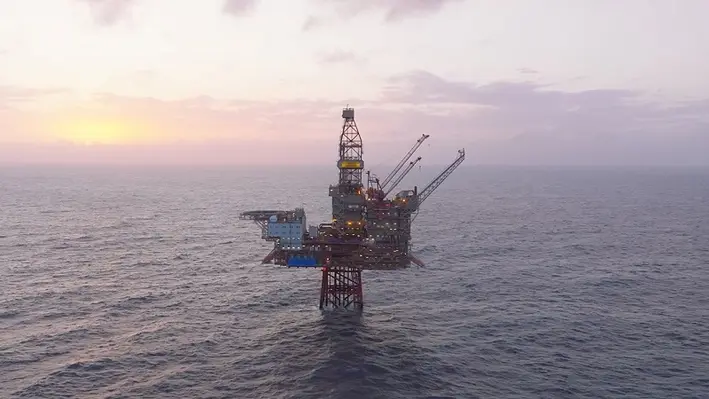
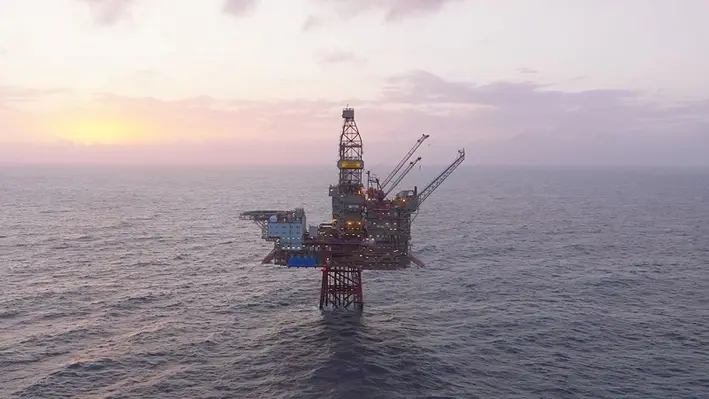 Aker Solutions has entered into a strategic partnership agreement to deliver maintenance and modification services on the assets and projects operated by Vår Energi on the Norwegian Continental Shelf (NCS).
Aker Solutions has entered into a strategic partnership agreement to deliver maintenance and modification services on the assets and projects operated by Vår Energi on the Norwegian Continental Shelf (NCS).
The partnership also includes Honeywell and StS-ISONOR, building on an already established collaboration model. The contract has been penned for a duration of five years with the option to be extended up to 11 years.
Paal Eikeseth, Executive Vice President and Head of Aker Solutions’ Life Cycle segment, said, “We are proud to be a trusted and strategic partner for Vår Energi. At Aker Solutions, we believe that strong partnerships drive efficiency, foster continuous improvement, and enable a leaner project organisation.”
The partnership aims to create value through joint project planning, safe and efficient execution, collaboration and shared objectives.
Torger Rød, Vår Energi’s Chief Operating Officer, commented, “Aker Solutions, Honeywell and StS-ISONOR represent world-leading technical expertise and extensive experience in areas of strategic importance to our activities. With Vår Energi’s clear growth ambitions, a strong and long-term partnership is crucial.
“We are working purposefully to achieve results through close collaboration, actively utilising our partners’ core competencies. By year-end, we will increase production to around 400 thousand barrels per day, which makes us one of the world’s fastest-growing oil and gas companies.”
Vår Energi’s operations span the entire NCS with a portfolio of 200 licenses and 42 producing fields.
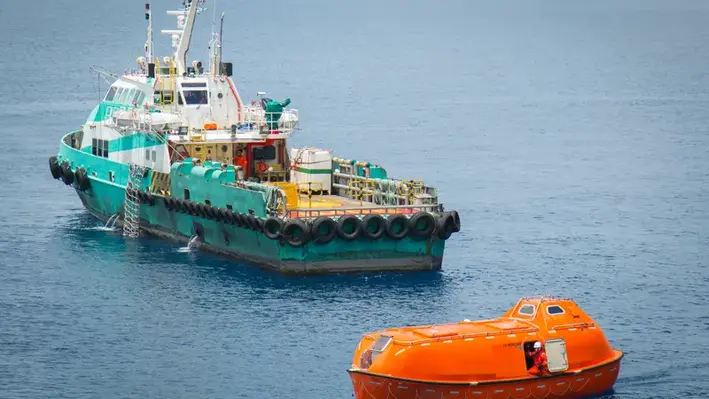
 Talos Energy has reported a total US$37.7mn in capital expenditures for plugging and abandonment (P&A) and settled decommissioning obligations for the third quarter 2024.
Talos Energy has reported a total US$37.7mn in capital expenditures for plugging and abandonment (P&A) and settled decommissioning obligations for the third quarter 2024.
Besides comittment to end-of-life activities, the company's total capital expenditures for the period stands at US$118.9mn. Its quarterly report also revealed an increase of spending on P&A and decommissioning to US$100-110,000.
Talos' decommissioning services up untill 2028 has been covered by Helix Energy Solutions Group under an agreement signed early last year. This agreement empowers Helix with the first right of refusal involving significant segments of Talos’ decommissioning schedule in the US Gulf of Mexico. Helix will be in charge of leading Talos' abandonment goals, including offshore wells, pipelines and platforms. For the campaign, Helix Alliance, the company's shallow water abandonment wing from Louisiana, will be deployed for structure removals by using its derrick barges, liftboats for plug and abandonment activities, and dive support vessels (DSVs) for pipeline abandonments. The initiative will see multiple offshore supply vessels (OSVs) among a divwerse range of other assets as well.
Speaking of the agreement, Helix’s President and Chief Executive Officer, Owen Kratz, had said, “We are excited to have been awarded this significant framework agreement for well and structure removal and decommissioning. Helix and Talos have worked together on field production, well intervention and decommissioning in the deepwater arena for many years, and this framework expands the relationship onto the shelf, further demonstrating Helix’s position as the preeminent company for full-field decommissioning in the Gulf of Mexico.”
The second and third quarters of 2024 saw significant decommissioning obligations for Talos, during which time the plugging and abandoning of the Sebastian prospect also took place. While operated by Murphy Oil Corporation at a 26.8% interest, Talos holds a 25.0% interest in the prospect. Other partners include Westlawn Americas Offshore at 18.2%, Alta Mar Energy at 20.0%, and Houston Energy at 10.0%.
Drilled in the third quarter 2024, Murphy had to finally plug and abandon the Sebastian number 1 exploration well after only non-commercial hydrocarbons were encountered. This involved the removal of various tubulars and equipment, which can only be initiated once all safety and sustainability measures are put into place.
Talos had eneterd into an agreement regarding the Sebastian prospect in the Mississippi Canyon Block 387 of the US Gulf of Mexico, where drilling began in the later half of August 2024. The drilling aimed to reach a true vertical depth of approximately 12000 ft of the rich Upper Miocene K-1 reservoir situated in the region. There were plans to tie back the Sebastian prospect to the Delta House facility, where Talos holds interests as well.
While initial tests suggested an estimated gross resource potential of 9-16 mn boe with an aticipated early production rate of 6-10 mn boe per day, from this amplitude-supported prospect, post drilling results hardly matched expectations. The well had to be plugged and abandoned even though stakeholders initially considered it as one of the 'tactical, lower-risk opportunities' that can be 'brought online relatively quickly' to aid bigger upstream projects.
To know more about Gulf of Mexico's decommissioning and abandonment scene, click here.

 TechnipFMC was awarded a substantial contract by Shell Nigeria Exploration and Production Company Limited to supply Subsea 2.0 production systems for the Bonga North development in Nigeria.
TechnipFMC was awarded a substantial contract by Shell Nigeria Exploration and Production Company Limited to supply Subsea 2.0 production systems for the Bonga North development in Nigeria.
The contract covered the design and manufacture of subsea tree systems, manifolds, jumpers, controls, and services, marking a significant step in advancing deepwater technology in the region.
Jonathan Landes, President, Subsea at TechnipFMC, commented, “Shell was the first to adopt our Subsea 2.0® configure-to-order solution, and continues to deploy it across multiple basins—underscoring its commitment to the technology globally. This award further positions us for future deepwater opportunities in the region.”
For TechnipFMC, a “substantial” contract is between US$250 million and US$500 million. This award was included in inbound orders in the fourth quarter of 2024. The contract highlights TechnipFMC's growing footprint in the subsea market and its strategic partnership with Shell.
Page 35 of 111